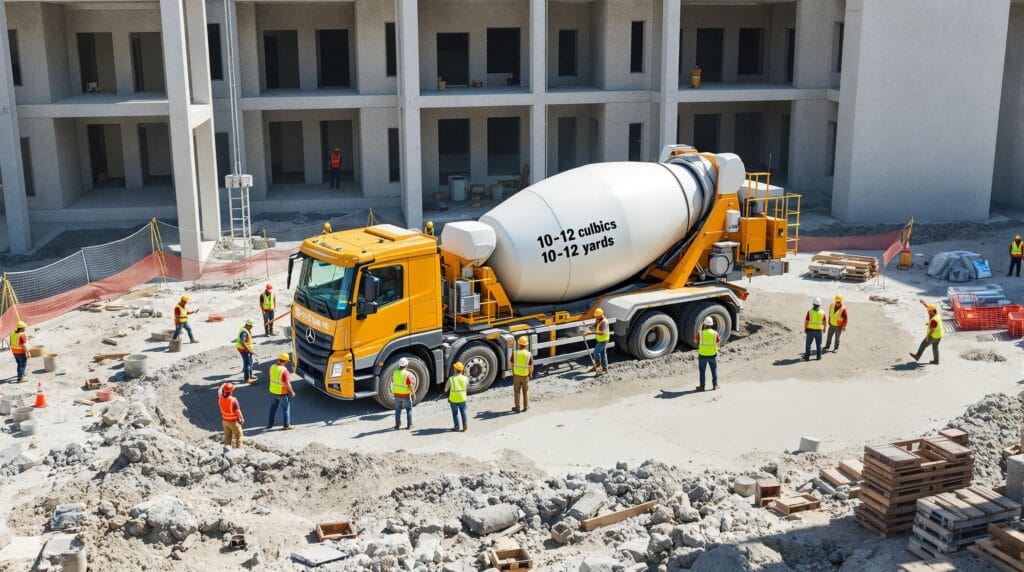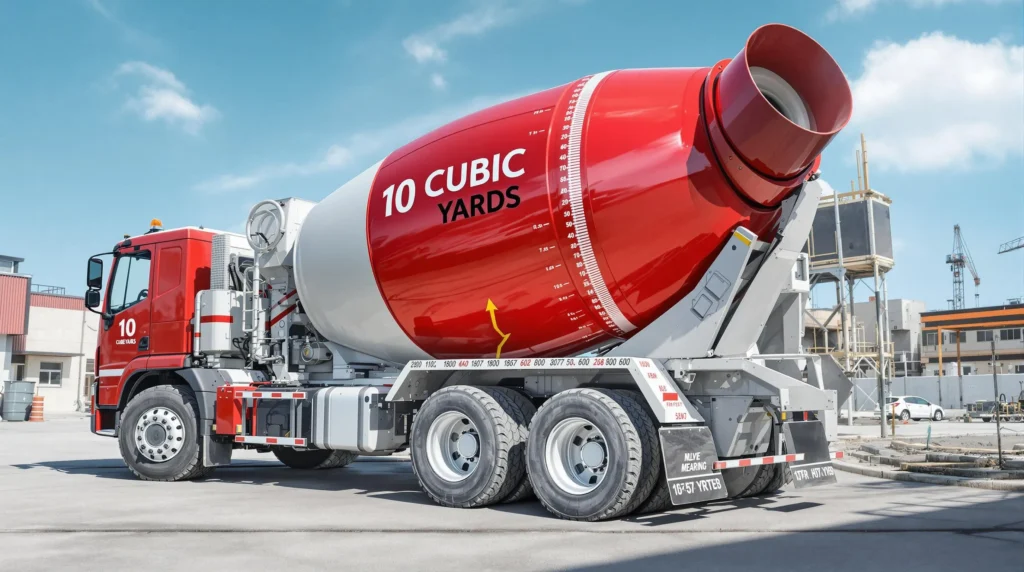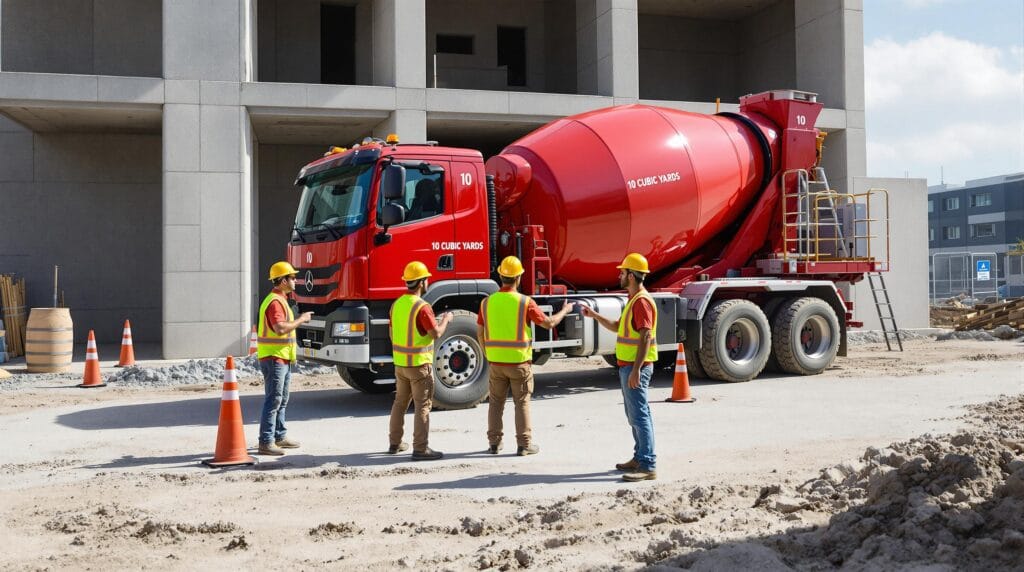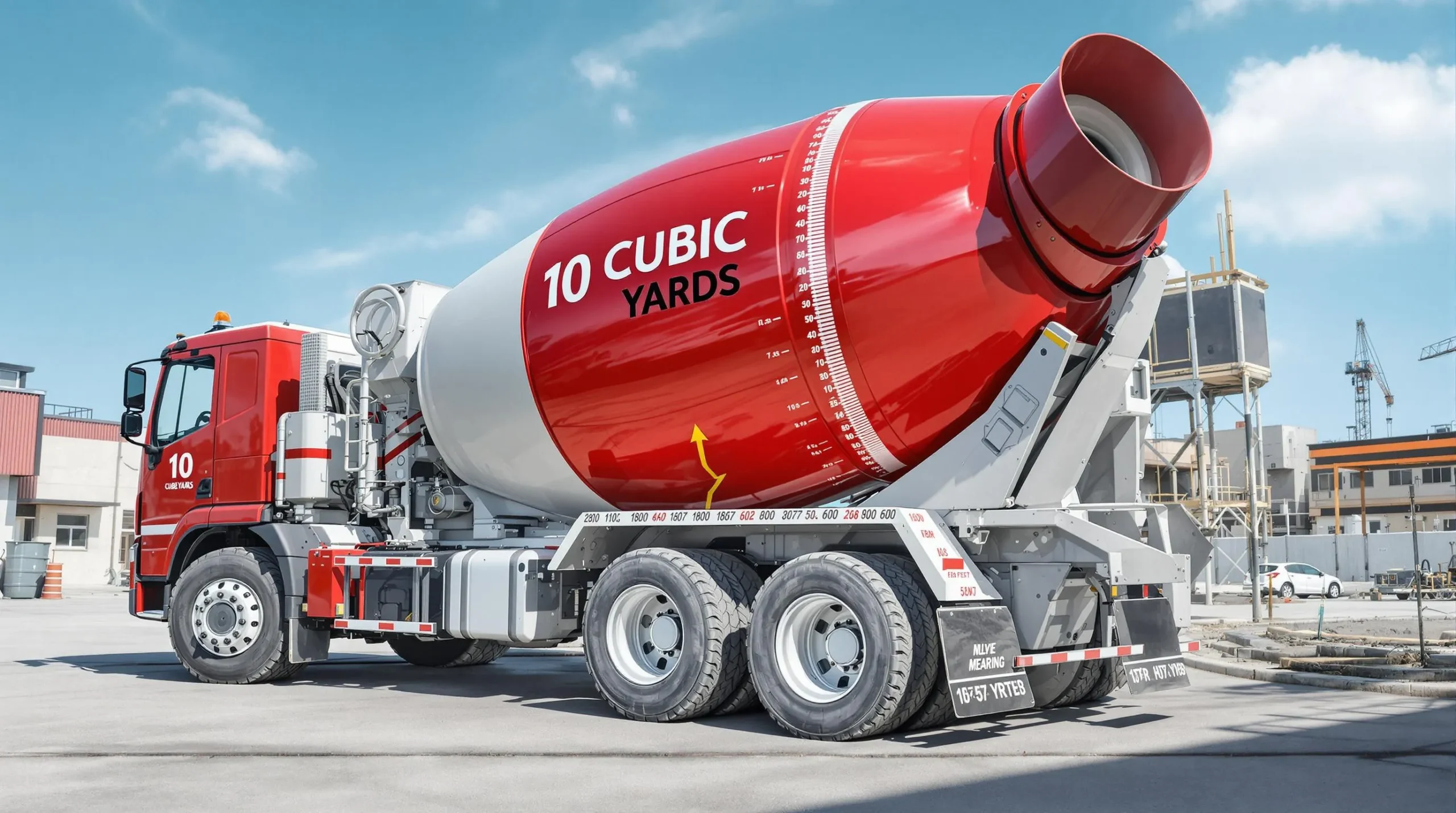How Many Yards In A Cement Truck? 5 Incredible Capacity Secrets
Introduction:
Ever watched a cement truck rumble down the road and wondered, “Just how many yards in a cement truck is that thing carrying?” It’s a common question, especially if you’re planning a project that needs concrete. Understanding the concrete truck volume is crucial for budgeting, scheduling, and making sure your job site has exactly what it needs.
According to the Portland Cement Association, proper concrete delivery planning is crucial for successful construction projects, making it essential to understand cement truck capacities.

How Much Concrete Does a Truck Hold? Unpacking Cement Truck Capacity
So, let’s get straight to it: how many yards of concrete are in a cement truck? The most common answer you’ll hear is around 10 cubic yards. A standard ready mix truck, the kind you see most often, is designed to carry roughly that amount. That’s a significant amount of material! Think of it this way: one cubic yard of concrete weighs over 4,000 pounds. So, a truck carrying 10 cubic yards of concrete is hauling a serious load.
However, the story doesn’t end there. While 10 yards is a good starting point for understanding how many yards does a concrete truck hold, the actual concrete truck capacity can vary. Several factors come into play, influencing how much concrete can a concrete truck hold.
The National Ready Mixed Concrete Association reports that while 10 cubic yards is standard, truck capacities can range from 8 to 14 cubic yards depending on local regulations and truck configurations.
Factors Affecting How Many Yards a Cement Truck Can Carry
Several things can affect how many yards can a concrete truck hold. It’s not just a simple, fixed number.
- The Size and Type of Truck: Just like cars, mixer trucks come in different sizes. Smaller trucks might carry less, perhaps around 6-8 yards, while larger ones could potentially handle more than 10. There are also different types of concrete truck, like volumetric concrete trucks, which mix the concrete on-site and might have different capacity considerations. You can learn more about different types of trucks, including some cool future concepts, by checking out this article on the 2025 Caterpillar Pickup Truck.
- Weight Limits: Road regulations and the truck’s own weight limit are major factors. Even if a truck has the physical space to hold more concrete, it can’t legally or safely exceed its maximum allowed weight. This is why understanding how much concrete does a truck hold in terms of weight is just as important as volume. The Federal Highway Administration sets strict guidelines for truck weight limits on bridges, which directly impacts how much concrete a cement truck can legally carry.
- The Mix Design: Believe it or not, the specific mix the concrete can influence how much a truck can carry. Different mixes have different densities. A heavier mix might mean the truck reaches its weight limit sooner, even if it’s not completely full by volume.
- Bridge Laws: Similar to weight limits, bridge laws dictate the maximum weight allowed on certain bridges and roadways. These regulations can sometimes restrict the amount of concrete a truck can carry on specific routes.
So, while 10 yards is a common figure, it’s always best to confirm with your concrete supplier the exact capacity of the trucks they’ll be using for your construction projects.
Why Knowing the Yards Matters for Your Project
Understanding how many yards of concrete does a concrete truck hold is more than just a fun fact. It has real implications for your project:
- Accurate Ordering: Knowing the truck capacity helps you accurately calculate how much concrete to order. Underestimate, and you’ll face delays and extra delivery fees. Overestimate, and you’ll have leftover concrete that you still have to pay for.
- Efficient Scheduling: If you know how much concrete will a truck hold, you can better plan the timing of deliveries. For larger pours, you’ll need to coordinate multiple trucks, and understanding their capacity is key to a smooth operation.
- Cost Management: Concrete is typically priced per cubic yard. Knowing the truck capacity helps you understand the delivery costs and manage your budget effectively.
- Job Site Logistics: Consider the space needed for the trucks to maneuver and unload on your job site. Larger trucks require more room. Thinking about the size of the concrete mixers and how they’ll access your pour location is crucial. Speaking of job sites, sometimes you need to show your appreciation for the hard work. You can find some ideas in this article about bulk trucker hats.

Beyond the Standard: Other Concrete Truck Considerations
While the standard ready mix truck is the workhorse of concrete delivery, there are other types to be aware of:
- Smaller Trucks: For smaller jobs or areas with limited access, smaller trucks with capacities of 1-5 yards are available.
- Volumetric Mixers: These trucks carry the raw materials for concrete and mix it on-site according to the project’s needs. Their capacity is often discussed in terms of the raw materials they can hold rather than the finished concrete volume.
- Dump Trucks with Concrete Buckets: In some situations, a dump truck might transport concrete in a large bucket. The capacity here depends on the size of the bucket.
It’s also worth noting that the weight limit of a truck isn’t just about the concrete. The truck itself has a significant weight, and the mixing drum and its components add to that. Regulations are in place to ensure safety and prevent damage to roads and bridges.
If you’re curious about other types of vehicles and their capabilities, you might find this comparison of Rivian vs. Tesla interesting. While not concrete trucks, they highlight the variety in vehicle design and purpose.
Getting the Right Amount: Working with Your Concrete Supplier
The best way to ensure you get the right amount of concrete is to work closely with your concrete supplier. They can help you:
- Calculate Your Needs: Provide them with the dimensions of your project, and they can calculate the exact cubic yards of concrete required.
- Determine Truck Size: They’ll know the capacity of their fleet and can assign the appropriate number of trucks to your job.
- Coordinate Deliveries: They’ll schedule deliveries to match your pour schedule, minimizing delays and ensuring a continuous supply of concrete.
- Address Site-Specific Challenges: They can advise on any access issues or other logistical considerations related to concrete delivery.
Remember, clear communication with your supplier is key to a successful concrete pour.

Conclusion: Cement Truck Capacity Demystified
So, how many yards in a cement truck? While the most common answer is around 10 cubic yards for a standard concrete mixer truck, it’s important to remember that this can vary based on several factors. Understanding these factors, from the type of concrete truck to weight limits and bridge laws, will help you plan your construction projects more effectively. By working closely with your concrete supplier, you can ensure you order the right amount of concrete, manage your budget, and keep your project on track. If you’re interested in the technology that powers some of these modern vehicles, you might find this article on the Hummer EV SUV adapter for Tesla Superchargers insightful.
Do you have any experiences with concrete deliveries? Share your thoughts in the comments below! And if you’re interested in the world of trucking beyond concrete, you might enjoy learning how to download American Truck Sim mods.
Let me know if you would like any adjustments or further refinements to this article!
There are no reviews yet. Be the first one to write one.







